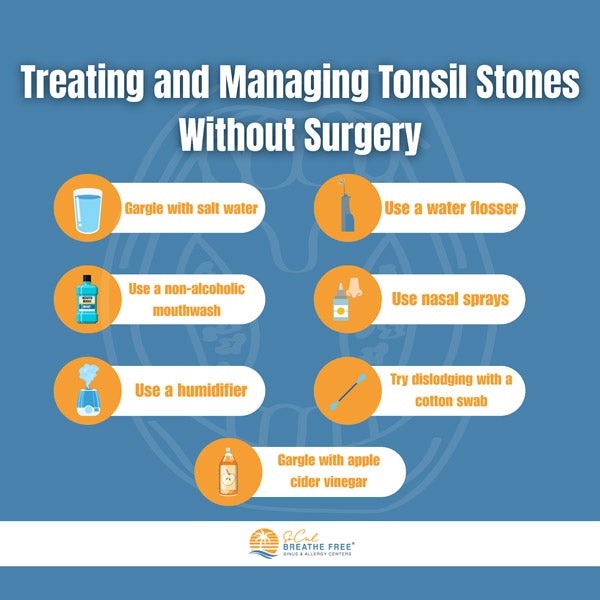I Have Post-Nasal Drip, Tonsil Stones & Acid Reflux—What Can I Do?
If you’re dealing with the uncomfortable trio of post-nasal drip, tonsil stones, and acid reflux, you’re not alone. While these issues may seem unrelated, they’re often interconnected—and they can seriously impact your daily comfort and confidence. The good news? There are non-surgical ways to manage all three, starting with understanding the link between them.

How It’s All Connected
Tonsil stones (also called tonsilloliths) are small, calcified formations that lodge in the crevices of your tonsils. Made up of bacteria, food particles, mucus, and other debris, these stones can cause chronic bad breath, sore throats, difficulty swallowing, and that annoying feeling like something is stuck in your throat.
Post-nasal drip—where excess mucus drips down the back of your throat—can feed right into this issue. Mucus becomes a breeding ground for bacteria, setting the stage for tonsil stone formation. And if you’re also dealing with GERD (gastroesophageal reflux disease), you’ve got even more throat irritation and inflammation, which makes your tonsils a prime environment for stones.
Do I Need Surgery?
Not necessarily. While tonsillectomy (surgical removal of the tonsils) is sometimes recommended for severe, chronic cases, many patients can manage symptoms effectively at home—especially by targeting the root causes like post-nasal drip and reflux.
Tips for Managing Tonsil Stones Without Surgery
If you’re looking for relief without going under the knife, try these non-invasive strategies:
- Improve Oral Hygiene: Brush your teeth, gums, and tongue twice a day and consider an alcohol-free mouthwash to reduce bacterial buildup.
- Hydrate and Humidify: Drink plenty of water and consider using a humidifier at night to keep your throat from drying out.
- Gargle Regularly: Salt water or diluted apple cider vinegar gargles can help loosen stones and soothe irritation.
- Use a Water Flosser: A gentle irrigator can dislodge stones and flush out debris from the tonsils.
- Try a Nasal Spray: Saline or steroid nasal sprays may reduce post-nasal drip, minimizing mucus buildup around the tonsils.
- Monitor Your Diet: Acidic, spicy, and fatty foods can trigger reflux and worsen inflammation. Try cutting back on soda, dairy, and processed snacks.
- Treat GERD: Over-the-counter antacids or doctor-prescribed medications can help manage acid reflux and reduce its impact on your throat.
When to Seek Help
If you’re doing all the right things but still struggling with persistent bad breath, painful swallowing, or frequent stone formation, it may be time to consult an ENT specialist. At SoCal Breathe Free, we take a comprehensive approach—looking at not just your tonsils, but your sinuses, reflux symptoms, and overall throat health—to create a plan that works for you.
You don’t have to live with discomfort. With the right care and guidance, it’s possible to breathe easier, feel better, and kick tonsil stones to the curb—no surgery required.


